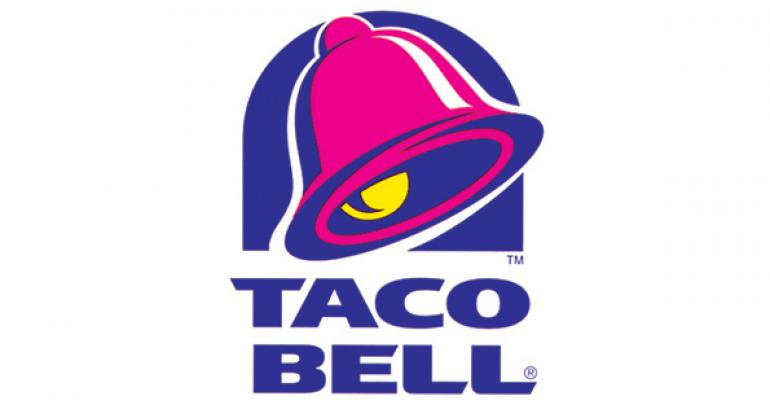Taco Bell has cut sodium levels across its menu an average 15 percent over the past five years, according to a report this week in the Louisville Courier-Journal.
The move is part of an ongoing effort that began in 2008 to reduce the amount of salt, fat and calories found in Taco Bell menu items, along with sister brands KFC and Pizza Hut, which are all operated and franchised by Louisville, Ky.-based Yum! Brands Inc.
“Watching and reducing sodium while retaining great taste and value is a journey we’ve been on since 2008,” said Rob Poetsch, Taco Bell spokesman. “While we continue to work with leading researchers and food developers to find solutions, it is a balancing act among all of the ingredients to deliver the best-tasting product.”
There is no one-size-fits-all approach, he added, “But this remains a priority for us.”
Taco Bell began testing reduced-sodium items in 2010. The aim was to gradually cut salt levels without guests noticing and while remaining transparent.
In 2013, Taco Bell officials announced a goal of bringing about 20 percent of combination meal options at or below about one-third of the recommended U.S. Dietary guidelines for the daily intake of sodium and fats, including saturated and trans fats, by 2020. The idea was that guests would be eating one of three meals in a day at Taco Bell, so meals should be available that meet recommended limits.
The chain aims to offer meals with less than 2,300 milligrams of sodium, the maximum daily limit recommended by the American Heart Association.
Greg Creed, who in January became CEO of Yum after serving as Taco Bell’s CEO, told the Louisville Courier-Journal that the chain has not revealed how it has reduced salt, but cuts have been made across the menu, from tortillas to marinades.
The Steak Burrito Supreme has 1,090 milligrams of sodium instead of the 1,340 milligrams it had in 2009. A Grilled Steak Soft Taco now has 490 milligrams of sodium versus 710 milligrams the same year. And the Cheesy Bean & Rice Burrito has 490 milligrams, a 32-percent decrease from 1,370 milligrams, according to the report.
Some critics, such as the Center for Science in the Public Interest, or CSPI, say Taco Bell’s menu remains dangerously high in salt, though its attempts at reduction are a step in the right direction.
Many restaurant meals contain more than a whole day’s worth of salt, CSPI said. The group considers salt the single most harmful substance in the food supply, and said reducing sodium intake by half would save an estimated 100,000 lives each year.
Getting the salt out
(Continued from page 1)
Taco Bell isn’t the only chain trying to get the salt out. Boston Market and Chick-fil-A have also been quietly improving the nutritional profile of menu items in response to customer demand, beginning even before passage of federal menu labeling mandates, due to take effect at the end of 2015.
Golden, Colo.-based Boston Market has removed salt shakers from restaurant tables, and the 460-unit fast-casual chain has successfully reduced sodium by more than 25 percent among signature menu items, and by 27 percent on average across the menu.
“We’ve put the whole menu up for review,” said Sara Bittorf, Boston Market’s senior vice president and chief brand officer. “We haven’t decided to reduce sodium in every single menu item, but everything is up for grabs, and we’ve exceeded our goal.”
The chain’s cornbread has about 30 percent less sodium as a result of the effort. The sodium in its mashed potatoes has decreased by about 26 percent, she said.
“Both are signature items, so we were surprised how high we could go with the reductions without inhibiting the integrity of the product,” she said.
Guests have not noticed the recipe changes, except in one dish. After testing a reduced-sodium version of macaroni and cheese, “Guests said no thank you. So we pulled the test and will leave it alone,” Bittorf said.
Boston Market doesn’t pretend to be a health food brand, she said. “Our goal is to make food that makes people feel good. Sometimes that means a more healthful meal, but sometimes that means comfort food or a more indulgent meal.”
However, consumers say sodium matters. “We’re never going to be a low-sodium restaurant,” Bittorf said. “But can we provide options for people who are trying to manage their sodium? I think we can.”
The chain has also expanded the number of meals it offers that have 550 calories or less. This year Boston Market is looking to add gluten-free versions of dishes like meat loaf.
Atlanta-based Chick-fil-A has also been quietly working on menu items with better nutritional profiles.
In 2013, the chain said it was working to remove artificial dyes, high-fructose corn syrup, preservatives and artificial monosodium glutamate, along with sodium, as customers asked for more healthful options.
Like Taco Bell, Chick-fil-A officials said they were reluctant to publicize the effort because they didn’t want guests to notice that recipes had been tweaked.
Using the chain’s nutrition calculator, a Chicken Sandwich with Waffle Fries and a Chocolate Milkshake has 1,950 milligrams of sodium, close to the recommended daily limit.
Chick-fil-A did not respond to requests for comment by press time.
Contact Lisa Jennings at [email protected]
Follow her on Twitter: @livetodineout

